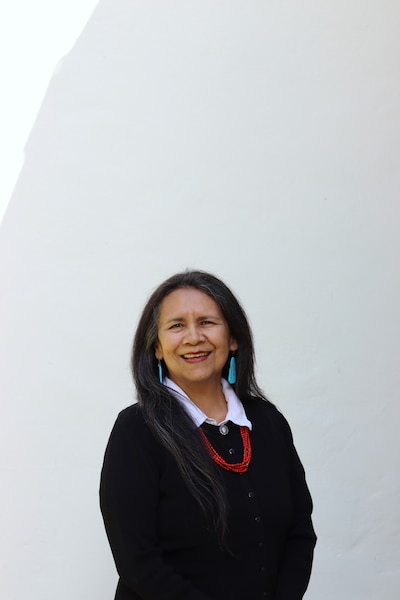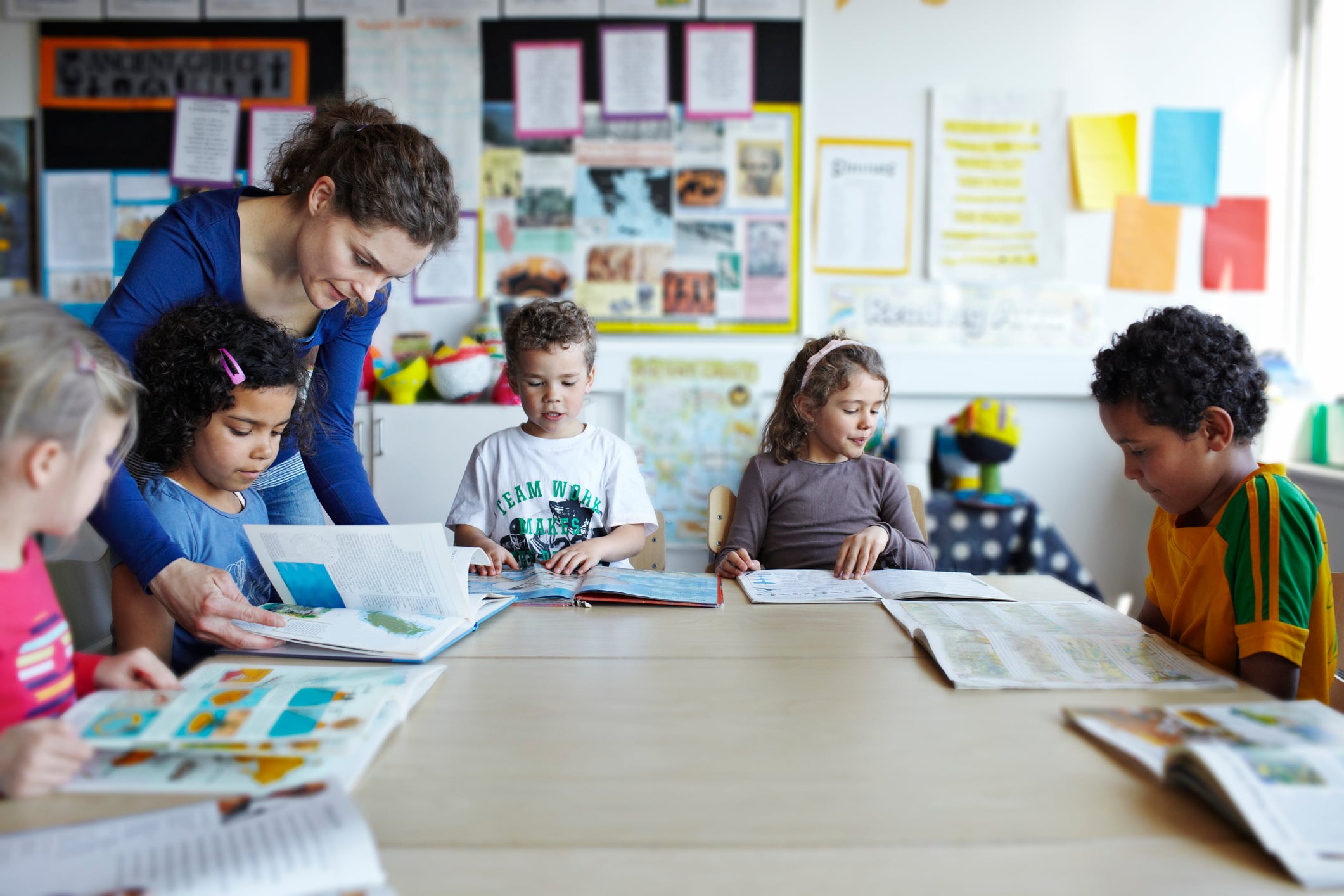Long before Dr. Debbie Reese earned her teaching degree at the University of New Mexico, she developed a love for educating others.
“I was one of those people who liked school so much when I was a kid that I would go home and make my siblings be my students,” said Reese, tribally enrolled at Nambé Owingeh and the founder of American Indians in Children’s Literature. “When I was in high school, I would ditch school, basically, and go to the Head Start and help the teachers there.”
A former classroom educator and university professor, Reese has written extensively about depictions of Native peoples in children’s books and co-edits a blog on the topic. In 2018, the American Library Association selected her to deliver the May Hill Arbuthnot Honor Lecture, which recognizes career contributions to children’s literature.
Reese spoke with Chalkbeat about her experiences as an educator, what sparked her interest in children’s books, and why it’s critical that schools do a better job educating their students about the more than 500 federally recognized Native nations in the United States.
This interview has been edited for length and clarity.
How did your experiences in education influence your approach to teaching?
I didn’t have any teachers who were critical of content in the ways that I am, so it’s not something I got from any of them. That awareness came as an adult when I started being in certain spaces that were completely ignorant of who we are and seeing that ignorance was based on romantic and stereotypical ideas that came from children’s books and mascots.
An awareness of how powerful stereotyping is became crystalized for me in my 30s when I started graduate school at the University of Illinois, where I got my Ph.D. That school had a mascot, which I was told about before I went there, and I thought, “Pfft, those don’t mean much.” But I got there and like, holy crap, people there really believed that was a good image of Native people. I went to the University of Illinois to study family literacy. This love of the mascot led me to think, “OK, so what’s going on in children’s storytelling that is feeding the love of this stereotypical mascot?”
I started paging through children’s books and seeing the ones that my daughter was finding at school and others that are just out there. I saw lots of it. Things like Grizzly Bob dressed up just like that mascot in “The Berenstain Bears Go to Camp.” I saw Clifford the Big Red Dog dressed up like an Indian as an option for his Halloween costume in “Clifford’s Halloween.” So I started to see just how much of that was out there.
When people [in Illinois] learned that I was part of that community, I would get invitations to come to this or that place. They wanted me to come and dance, and I would tell them, “No, we dance for spiritual purposes or at certain times of the year. I don’t dance for performance.” They would say, “Well, can you come and tell us a story,” and I would say, “No, I’m not a storyteller. I’m an educator. I’d be glad to come and talk to you about my own Pueblo Indian culture, history, all of that.” They didn’t want that. It was like, “Oh, well thank you, but no.”
What advice would you give teachers who want to do a better job of incorporating Native books into the classroom?
You must let go of your childhood favorites because the nostalgic embrace that you have for them is getting in the way of being able to do a better job. So many people feel like, “Oh, but ‘Little House on the Prairie.’” What I have found is that people will try to do both. They will try to use a problematic book and a book by a Native person, but then books by Native people aren’t seen as real, because the Native image doesn’t match the stereotype in that nostalgic book.

What happens when Native stories aren’t told in the classroom? What impact does that have on Native students, who may feel that they are not being represented?
Or being misrepresented — I think that’s what we have most of all, because of those award-winning classic children’s books that get used in classrooms. Like “Arrow to the Sun.” It’s supposed to be a Pueblo Indian story, but it’s not. It’s a white fiction written by a white writer, who created what some think is pretty art, and that gets used in school classrooms to teach about Pueblo people, and it doesn’t.
So if you’re a Pueblo kid, and your teacher is reading that book to you, then you know that a kiva is not a scary place where you fight bees and all kinds of monsters, it’s a place of education. For that period of time, you’re listening to a teacher teach a book that has information in it that you know is wrong. So what do they do with that? I don’t think any little kid is actually able to articulate that or process it.
The data shows that Native kids don’t perform on testing as well as non-Native kids; that our kids drop out of school at higher rates than others; that Native people have higher suicide rates than others. I think this is all kind of a drip, drip, drip thing that our kids — or any kids whose people are misrepresented — deal with all the time. We don’t have very many counters to that.
These new books that are coming out do counter that, but teachers have to embrace them.
What happens when non-Native students only learn about Native Nations and peoples from books that perpetuate stereotypes?
They shouldn’t be using those books at all because they’re wrong, and these are educational spaces where parents are trusting a teacher to do right by their kids — whether that’s a Native kid or not. So Native kids are sitting there having to deal with this nonsense, and a non-Native kid is absorbing and regurgitating that information. For the non-Native kids who grow up to become book editors or maybe senators in the United States halls of power, they’re making decisions based on misinformation they got from childhood.
The ramifications for the harm done by these books are way greater than we know.
Do you have any favorite authors or books that you recommend to students or teachers?
I’m not going to answer that question because there are too many and I want teachers to explore all of them. I’m really pushing for teachers to understand how badly we were all educated about who Native peoples are, and so that means you really have to get to know many writers and what tribe they are from.
When you’re thinking about a Native writer — now here I’m going to say Eric Gansworth — when you’re using a book by Eric Gansworth, you can say, “Eric is a member of the Onondaga Nation. Here is Eric’s website.” Or I could do that same thing with any of the books — with Cynthia Leitich Smith, with Sharice [Davids], who has her biography out recently.
The key point is getting to know the author’s name and that author’s nation. And using the word “is” instead of “was.” Every time you’re talking about that author and that book, because teachers by default, everybody goes to “we were,” past tense. That has to fall by the wayside too. It has to be present tense. We can do that with Native books by Native writers.
Is there anything we haven’t talked about yet that you want to add?
People like to defend certain books, like “Little House on the Prairie,” by saying, “Well that’s what they thought back then,” implying that everybody was ignorant and racist at that time and everybody thought the same. That’s just not true. That’s an empty defense of a problematic book. For sure, during the time that series was set, and the time that it was published, not everybody thought that. Native people didn’t think they were savages.
The other thing is, I’m not doing any public speaking hardly at all because of COVID, but almost always, somebody in the audience will say, “Well, why can’t non-Native writers write these books? You’re trying to censor.” No, I’m not trying to censor. I’m trying to help you understand that Native people bring insights to this body of work that non-Native people don’t have access to. I get tired of that question. I get tired of people saying, “Well, why can’t a white writer do this?” Because the fact is, white writers do. They do it all the time. They continue to do it, and the books that they did 30 years ago continue to be used in classrooms today.
It’s not that they can’t. It’s a question of where we are in terms of today’s society, what we’re thinking about, what is appropriate, and what is best.
And what is best is Native books by Native writers.
Julian Shen-Berro is a reporter covering national issues. Contact him at jshen-berro@chalkbeat.org.







